Menus
- Toothbrush for small angle cleaning included in delivery
- More comfortable chassis
- facts and figures
- Interview with Clemens Neese
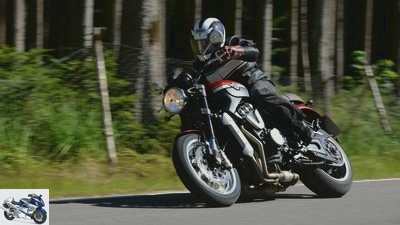
Photo: manufacturer
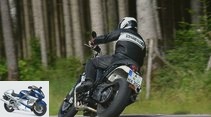
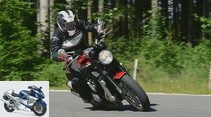
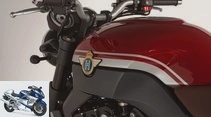
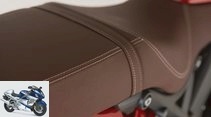
13 photos
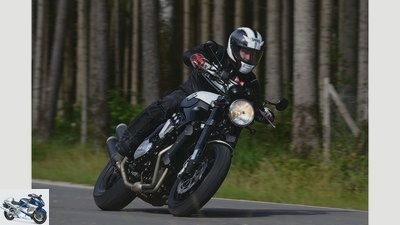
Horex
1/13
The Horex Classic does what the driver tells it to do. Steers quite precisely, does not touch down too early even with a decent lean and hisses angrily from the silencers with every throttle.
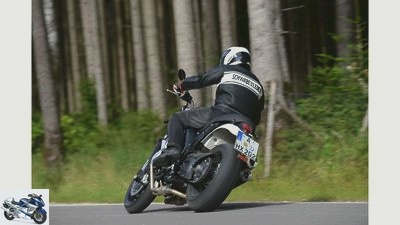
Horex
2/13
On the other hand, the domesticated VR drive in the upper third speed of the Roadster does not act as tough as in the Classic version.
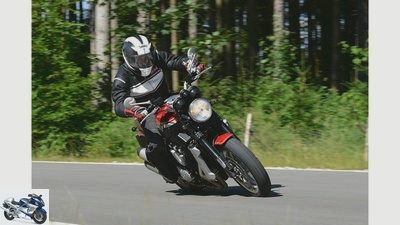
Horex
3/13
At 4500 rpm, the roadster version shows a performance drop. There is no sign of this in the Classic.
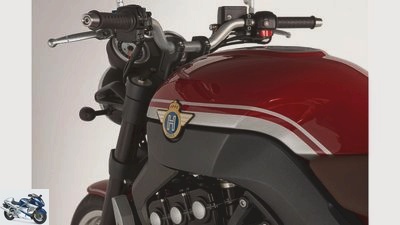
Horex
4/13
The two-tone paint of the Horex VR6 Classic.
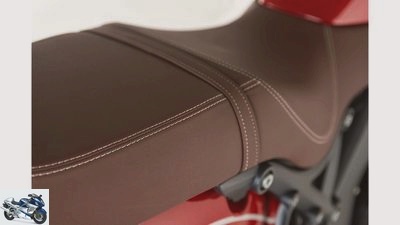
Horex
5/13
The quilted bench of the Horex VR6 Classic.
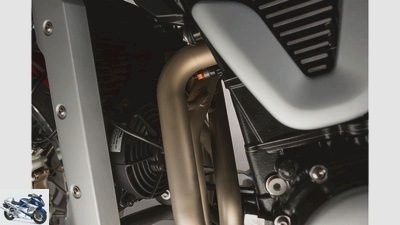
Horex
6/13
It runs most powerfully when cruising between 2500 and 6000 revolutions per minute.
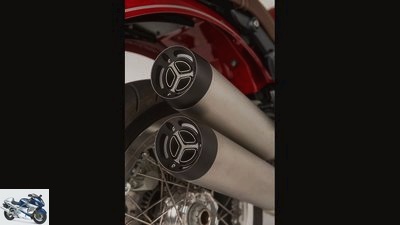
Horex
7/13
The Classic is much more road-friendly, more powerful exactly where you need the power.
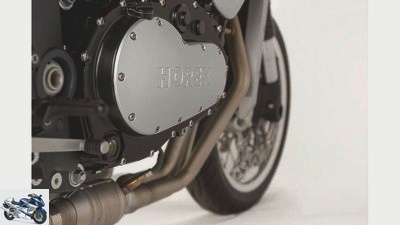
Horex
8/13
The Horex VR6 Classic is equipped with a water-cooled six-cylinder, four-stroke, 15-degree VR engine.
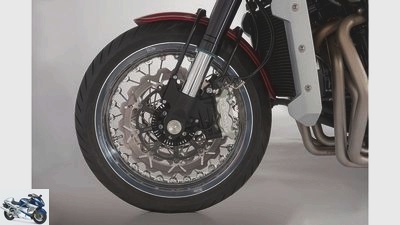
Horex
9/13
They just look great, the rims. And to take the wind out of the sails of the eternal naggers: Yes, they are pretty difficult to clean.
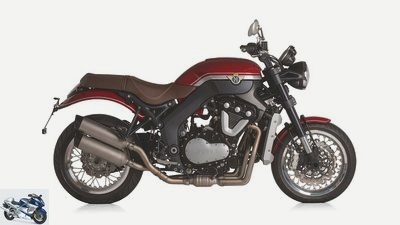
Horex
10/13
No, you don’t have to look more closely to distinguish the Roadster and Classic models. The off-center spoked wheels of the Classic are an absolute unique selling point.
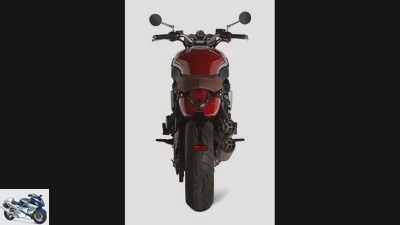
Horex
11/13
The seat height is 820 mm. If required, this can also be reduced by 20 mm upon request from the factory.
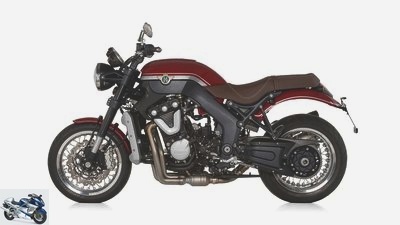
Horex
12/13
Off-center spoked wheels – something like this has never been in series.
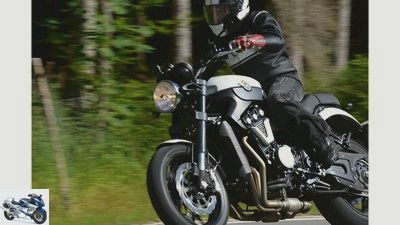
Horex
13/13
The Roadster also has 35 hp more than the Classic version.
Horex VR6 Classic in the driving report (2013)
Toothbrush for small angle cleaning included in delivery
Shortly after the first deliveries of the Horex Roadster, the small manufacturer is already pushing the second model into the shops with the Horex VR6 Classic. MOTORRAD was allowed to test drive.
No, you don’t have to look closely to distinguish the models. The off-center spoked wheels of the Horex VR6 Classic are an absolutely unique selling point. No large-scale manufacturer has offered this in series. They just look great, the rims. And to take the wind out of the sails of the eternal naggers: Yes, they are pretty difficult to clean. If you believe the jokes of the Horex team, a toothbrush for cleaning tiny corners is included. You couldn’t check that on site. For this there was verbal feeding by TV chef Horst Lichter, according to him, a die-hard Horex lover. And by the way, the new one could also be tested.
Buy complete article
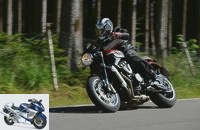
Horex VR6 Classic in the driving report
Toothbrush for small angle cleaning included in delivery
Horex VR6 Classic doesn’t touch down too early




13 photos
Pictures: Horex VR6 Classic in the driving report (2013)
To home page
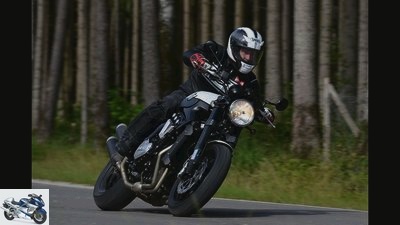
Horex
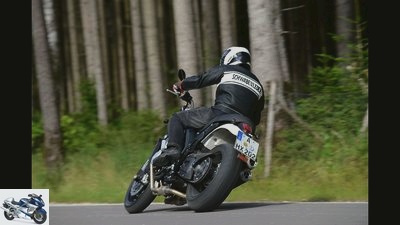
Horex
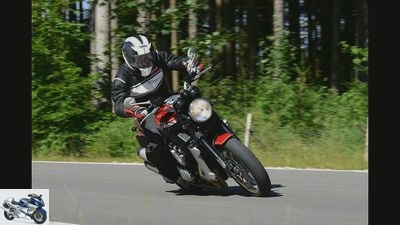
Horex
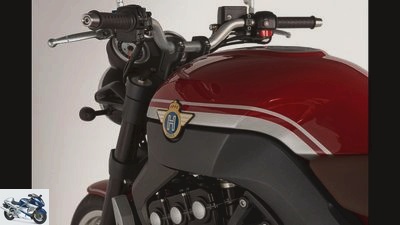
Horex
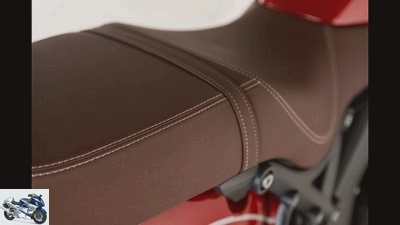
Horex
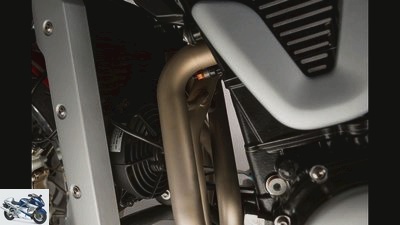
Horex
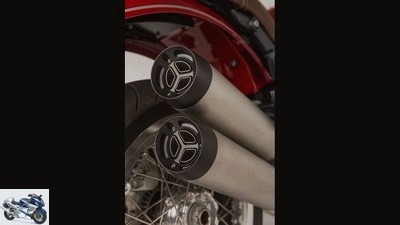
Horex
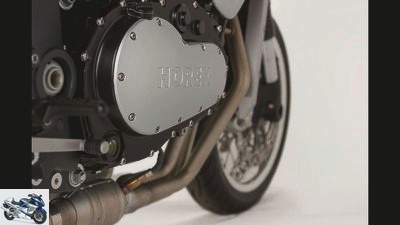
Horex

Horex

Horex

Horex

Horex

Horex
In general, the VR6 – this 1218 cubic unit – should be ridden once in a lifetime as a die-hard motorcyclist. The sound when idling is reminiscent of two Triumph three-cylinders that are supposed to sing in a choir, but constantly miss the action. The VR6 responds to light thrusts of the gas while stationary with a groovy tremor that feels like a not perfectly synchronized four-cylinder. Sounds negative? But it’s great cinema. Because at the latest when the VR6 accelerates and dashes through the revs, it is an experience. Not rinsed soft. Not boring. In both models.
The small manufacturer has tried to incorporate two souls into its VR drive: While the roadster model has a peak output of 161 hp at 8800 rpm, the classic version has been muzzled. Here the six-cylinder only develops 126 hp at almost identical speeds. The maximum torque fell from 137 to 120 Nm. A changed mapping plus two interference tubes are responsible for this. The adaptation should generate more power at medium and low speeds. Thank goodness both versions were available for test drives on site to feel the differences. To cut a long story short: The Classic set-up is much more road-friendly, more powerful exactly where you actually need the power: when cruising between 2500 and 6000 rpm.
The Horex VR6 Classic has no trace of the slight performance drop that the Roadster unfortunately has at 4500 rpm. In return, the domesticated VR drive acts noticeably tougher in the upper third of the speed. Do you miss the 35 hp? Not really. Something is even better: While the Roadster draws attention to itself, especially in inner-city areas, with a rather inharmonious throttle response, this phenomenon only occurs to a rudimentary degree with the Classic.
More comfortable chassis
Horex
Off-center spoked wheels – something like this has never been in series.
The chassis has also been adapted to traditional country road cruises, i.e. it has been adjusted to be a bit more comfortable than on the Roadster: the front of the Horex VR6 Classic has a fully adjustable WP fork, at the rear a Sachs shock absorber with adjustable rebound and spring base takes care of the driver to save. The coordination of both spring elements has been successful, to describe them as sporty and comfortable hits the nail on the head. On the braking side, the Augsburgers rely on radially screwed four-piston brake calipers from Brembo at the front, which are supported by a two-piston caliper from the same company plus the latest Bosch ABS. The ensemble works more than satisfactorily.
Nevertheless, mockers could now say: For 2,000 euros more you get 35 hp less – where is the advantage? Horex justifies the difference with a more complex two-tone paintwork included in the price, the rather expensive, exclusive wire-spoke wheels, a stylish quilted bench and some more luxuriously processed add-on parts. Hopefully the customers will see it too.
facts and figures
Horex
The Horex VR6 Classic is equipped with a water-cooled six-cylinder, four-stroke, 15-degree VR engine.
engine
Water-cooled six-cylinder four-stroke 15-degree VR engine, three overhead, chain-driven camshafts, three valves per cylinder, bucket tappets, dry sump lubrication, injection, Ø 34 mm, uncontrolled catalytic converter with secondary air system, 450 W alternator, 12 V / 19 Ah battery, Hydraulically operated multi-disc oil bath clutch, six-speed gearbox, O-ring chain, secondary ratio 48:18.
Bore x stroke: 68.0 x 55.0 mm
Displacement: 1218 cm³
Compression ratio: 12.5: 1
Rated output: 93 kW (126 hp) at 8500 rpm
Max. Torque: 120 Nm at 7000 rpm
landing gear
Bridge frame made of aluminum with screwed-on tubular steel frame, upside-down fork, Ø 48 mm, adjustable spring base, rebound and compression damping, single-sided swing arm made of aluminum, central spring strut with lever system, adjustable spring base, rebound damping, double disc brake at the front, Ø 320 mm, four-piston fixed calipers , Rear disc brake, Ø 264 mm, two-piston fixed caliper, ABS.
Spoked wheels with aluminum rims: 3.50 x 17; 6.00 x 17
Tires: 120/70 ZR 17; 190/55 ZR 17
mass and weight
Wheelbase 1506 mm, steering head angle 66.0 degrees, caster 95 mm, spring travel f / r 120/120 mm, seat height 820 mm, dry weight 249 kg, permissible total weight 450 kg, tank capacity / reserve 17.0 / 4.0 liters.
Guarantee: two years
Color: red / silver
Price: 24500 euros
Interview with Clemens Neese
Horex
Managing Director Clemens Neese of Horex GmbH.
Clemens Neese, Managing Director of Horex GmbH in Augsburg, spoke to MOTORRAD about the new Classic model and the future of the company.
Mr. Neese, how was it? What takes a long time will be fine. Is everything okay at Horex? Or do we prefer to say: Is everything going according to plan?
Neese: Yes, you could say. After initial difficulties, production is finally up and running. 100 machines have already been delivered …
And now the second model is already following … How does the Classic version differ from the Roadster?
Neese: Visually through a different paintwork, the changed surface finish of some components and of course through the off-center spoke rims. Technically, especially in performance. While the roadster provides a homologated 161 hp peak output and a slightly higher performance development, that of the Classic model is designed for torque and offers 126 hp peak output.
During the first test drives, some journalists criticized the insensitive throttle response. The problem is off the table?
Neese: Of course we are very careful to continuously improve our VR6, the mapping in particular is subject to constant optimization. Two members of our 22-strong team are constantly working on improving the mapping. It’s never easy when you’re starting from scratch. The current mapping is significantly improved, the update for all existing machines is already in progress.
After 100 motorcycles have been delivered, you already bring the second model. What is your current production capacity and from what quantities do you steer into the profit zone?
Neese: We can currently build two to three motorcycles a day, around 700 a year. However, our goal is to have at least 1,000 machines a year, then the sound barrier will be broken and the company will be profitable. However, this does not only apply to the contribution margin. 1000 pieces are also an order of magnitude that creates an acceptable basis for negotiations with the suppliers.
How do you assess the market situation for the two models??
Neese: I could imagine that the 50:50 models would sell. To our astonishment, the Classic was very well received at the trade fairs, although it costs 2000 euros more than the Roadster. We received very good feedback on the Classic version from both customers and our dealers when it was at the fair last year. That’s why we build them. We are optimistic.
What kind of dealers are they and what other brands do they have in their product range??
Neese: I initially suspected that there would be certain brand combinations. But that is not the case. We have dealers who sell both Japanese and European motorcycles. Ultimately – I believe – it is more decisive how respected and popular the retailer is in his region.
Horex
The seat height is 820 mm. If required, this can also be reduced by 20 mm upon request from the factory.
You were brave from the start to invest in a shrinking market.
Neese: Of course we did a market analysis. Customers with high purchasing power and willingness to buy are interested in cult brands. How else is it possible that Triumph, Harley, Ducati or BMW experience such a high flight? And not the Japanese? That makes us confident. I also have the feeling that Asian manufacturers are focusing on the booming Chinese market. The fact that the traditional brands are more successful today than in the past depends on the current customer structure. The youth who would have bought a Bandit, Fazer or Hornet a few years ago simply don’t exist to the same extent today.
On the other hand, with your high-priced products, you are also closing off access to young people who, as is well known, do not have that much money.
Neese: A VR engine will never be the cheapest in terms of production costs. But he is suitable for families. We deliberately chose 200 cubic cubic capacity. The VR technology of course also works with a VR3 or VR5, with the known advantages. But if we had built a VR3 with 600 cm3 first, we would be in a market in which the vehicle would have to be offered for 8,000 to 9,000 euros. In order to realize this price, one would have to produce a number of at least 10,000 copies per year for it to be profitable. That is almost impossible for a start-up like us.
So you can say: In the beginning there was the engine?
Neese: Yeah. And I’m happy to have a unique selling proposition with the VR6.
Soon you will be able to download a 3-D configurator and put together your dream Horex on your PC at home. Wouldn’t it make sense for you as a small manufacturer to be able to offer all currently available features in a mix? So also the different engine variants plus spoked wheels?
Neese: In theory, that would be possible for such a small factory. The parts management and warehousing speak against it, however. We have to limit ourselves to certain basic variants and then offer them variably. There must be unique selling points of the models. As for the spoked wheels: For example, they have only been homologated for the Classic model with a peak performance reduced by 35 hp. As you can see, not everything can be mixed and matched. And it shouldn’t be.
There will be more models in the foreseeable future?
Neese: Yeah. However, for the time being we will operate with the two models. Anything else would be too speculative.
At the beginning a supercharged model with over 200 hp was announced. Is the loader off the table?
Neese: Not at all. The engine is conceptually designed for this performance. We’ll definitely do that at some point. When and in what form, however, is still questionable. We stand by what we said at the time, but experience teaches us that in the future we must operate at the right time and with reliable announcements and timelines.
Related articles
-
Manufacturer The 800cc naked bike from Kawasaki Driving report Kawasaki Z 800 Mission: Check out Kawasaki’s new Z 800. Crime scene: southern France….
-
BMW F 800 R in the driving report
BMW 21st photos BMW 1/21 The new BMW F 800 R in white / blue … BMW 2/21 BMW F 800 R.. BMW 3/21 BMW F 800 R.. BMW 4/21 BMW F 800 R.. BMW 5/21 BMW F 800…
-
Driving report Benelli Tornado 1130
Rossen Gargolov Driving report Benelli Tornado 1130 Wind force 1130 Don’t worry, with this heading everything is correct. Because the 900s tornadoes …
-
Electric superbike Sarolea SP7 in the driving report
markus-jahn.com 17 pictures markus-jahn.com 1/17 Helmut Schmidt’s classic, whoever has visions should go to the doctor, does not apply to Torsten Robbens and …
-
Photos: Kunstle Driving report MZ 1000 SF Curtain up Something new in the east. With the two-cylinder 1000 SF, MZ now offers a clear view of the…
-
Driving report Ducati Streetfighter 848 (2012)
Ducati driving report Ducati Streetfighter 848 (2012) The new naked bike from Ducati This is a tradition at Ducati. First you feed the pack …
-
Driving report Harley-Davidson models 2008
Harley-Davidson Driving report Harley-Davidson models 2008 Heavy Birthday For its 105th birthday, the traditional American brand is by no means just…
-
Driving report Honda Dream 50 Guys, your 50s Not only the connoisseurs over forty are delighted, but also the young audience is amazed when Honda’s…
-
Driving report Kawasaki ZZR 1400
Artist Driving report Kawasaki ZZR 1400 (2006) Full program With the ZZR 1400, performance is program: 200 HP make it the most powerful series machine of…
-
Driving report KTM 250 SX-F PowerBar Motocross World Championship 2003. KTM sends the prototype of the new quarter-liter four-stroke into battle….